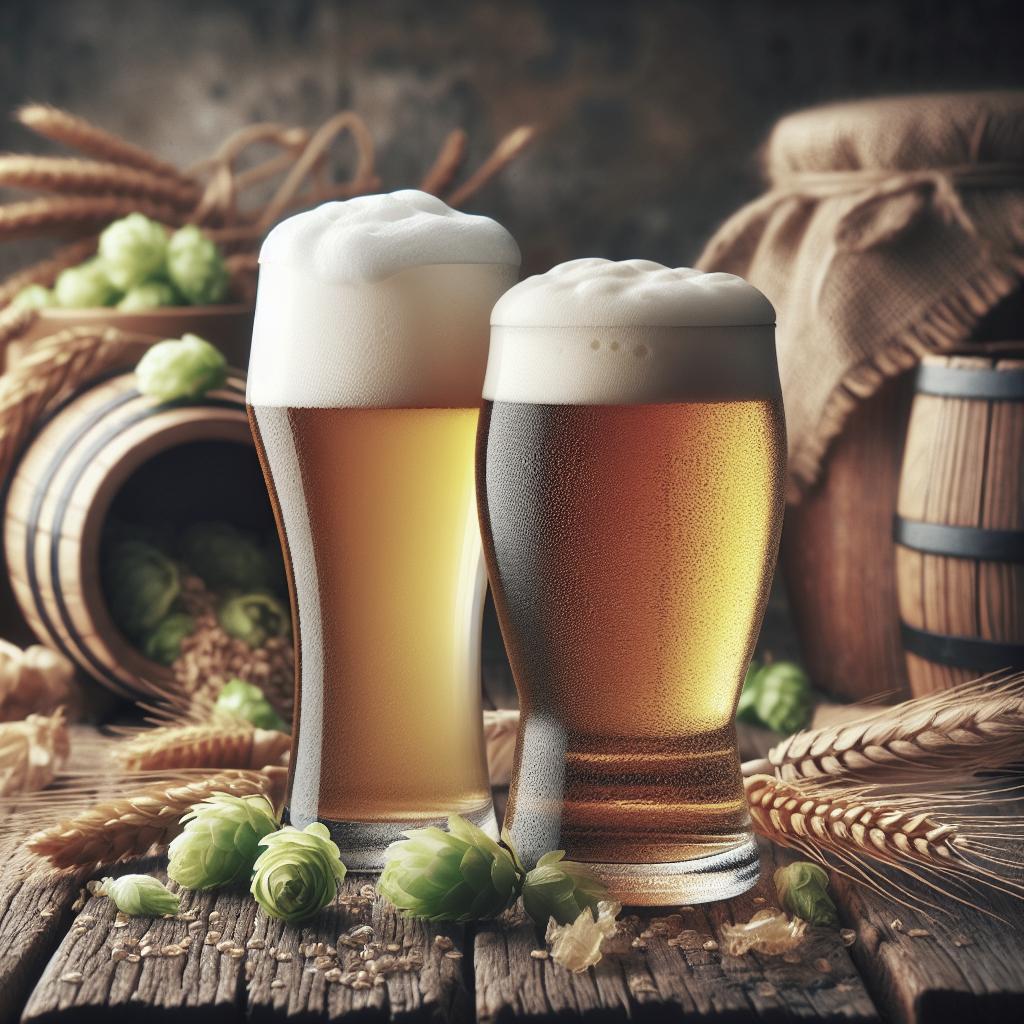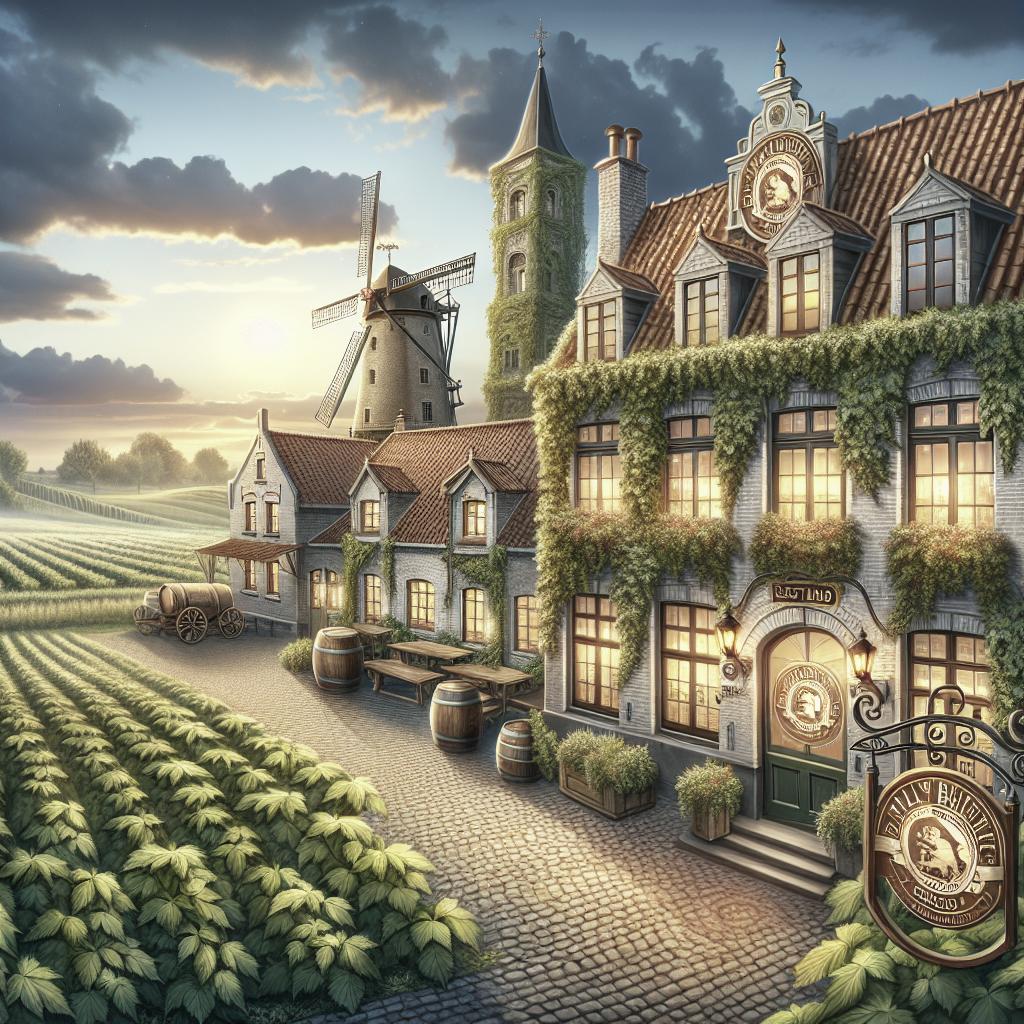“`html
Exploring the Differences between Blond Ale and Tripel
When it comes to Belgian beers, the variety is as diverse as it is delectable. From the light and approachable Blonde Ale to the robust and complex Tripel, understanding the nuances of these beers can enrich your appreciation of traditional brewing practices. This article delves into the distinct characteristics of these two popular styles, exploring their origins, flavor profiles, and place within the broader spectrum of Belgian ales. We’ll journey through the world of Abbey Ales, Farmhouse Ales, and Sour Ales, and touch upon other notable Belgian beers such as Witbier and Lambic. By the end, you’ll have a clear perspective on what sets Blond Ale and Tripel apart and how they fit into Belgium’s rich brewing heritage.
Abbey Ales
Abbey Ales are a beloved category within the Belgian beer landscape, typically brewed by commercial breweries that emulate the styles once crafted by monks in abbey communities. These ales can vary significantly in style, ranging from the lighter and nuanced to the dark and complex, but they are united by their historical roots and brewing traditions. Abbey Ales often include dubbels, tripels, and quadrupels, with each style distinguishing itself through unique ingredients and brewing techniques.
Despite the modern commercialization, many Abbey Ales still possess a rustic charm, with distinct yeast profiles imparting fruity, spicy, or earthy characteristics. They often showcase a balance between malt sweetness and hop bitterness, and may incorporate candi sugar to enhance the flavor and alcohol content without adding heaviness. While Blond Ale may not always be categorized as an Abbey Ale, it shares some of the stylistic inspirations found within this category.
Dubbel, Quadrupel, and Belgian Strong Dark Ale
The Dubbel, Quadrupel, and Belgian Strong Dark Ale represent the richer and more intense side of Belgian beers. Dubbels typically offer a malty sweetness with notes of caramel and dark fruits, accompanied by a medium to full body. Quadrupels are even more robust, with higher alcohol content and a deep, broad flavor profile featuring figs, raisins, and toffee. Belgian Strong Dark Ales bridge the gap, providing potency and complexity with an emphasis on malt-driven characteristics and a spicy yeast strain.
These styles serve as a counterbalance to the lighter Tripel and Blond Ale. While Tripels are bold in their own way due to their strength and vivid fruity notes, they lack the deep maltiness and darker hues found in this category. Conversely, Blond Ales, while often showcasing subtle malt, lean towards a lighter, more refreshing drinking experience.
Tripel
Tripel is a celebrated style in the world of Belgian ale, known for its golden color, high alcohol content, and intricate flavors. The name ‘Tripel’ refers to the brewing process, which involves using three times the usual amount of malt, producing a strong, complex beer. It often features a blend of fruity esters, spicy phenols, and a light malt backbone that contributes to a delicate sweetness.
Characteristically, Tripels are effervescent with a dry finish, revealing hints of banana, citrus, and clove from the yeast. They are deceptively smooth, often leading to more consumption than intended due to their refined balance of alcohol warmth and refreshing flavor. The boldness and depth of a Tripel contrasts the more straightforward and lighter character of a Blond Ale, defining its distinct place in the Belgian ale family.
Farmhouse Ales
Farmhouse Ales, traditionally brewed in the rural environs of Belgium and France, encompass a range of styles designed for refreshment and sustenance. They typically utilize local ingredients, including grains, hops, and wild yeasts, resulting in a diverse array of flavors and aromas. Renowned for their rustic qualities, Farmhouse Ales often have a dry, crisp finish with a notable spiciness and a unique barnyard aroma.
This category of ale is deeply intertwined with the agricultural lifestyle, reflecting the terroir of the region in which they’re brewed. While Tripels are formal and elaborate in their construction, Farmhouse Ales like Saison offer a more casual, spontaneous brewing style, creating a different context for comparison when positioned alongside Blond Ale’s straightforward appeal.
Saison and Bière de Garde
Saison, a staple of the Farmhouse Ale category, originated as a refreshing brew for seasonal farm workers in Belgium. It’s characterized by its varied flavors, often incorporating peppery spices, citrus peel, and sometimes even herbs. Typically dry and well-carbonated, Saison bridges the gap between complex and quenching, offering a unique balance of fruity and spicy notes.
Bière de Garde, on the other hand, is rooted in the Flanders region of France. Compared to Saison, it is maltier, with an emphasis on toasty, caramel-forward tones. Both Saison and Bière de Garde offer rich landscapes of flavor, yet when held against a Blond Ale or a Tripel, they display a diversity of brewing philosophy—more geared towards rustic individuality than the structured, yeast-focused profile of the latter styles.
Other Belgian Ales
The Belgian ale spectrum extends well beyond the widely recognized styles, with each contributing its own unique signature to the region’s kaleidoscopic beer culture. From the wild-fermented complexities of Lambic to the becalmed approach of the Belgian Pale Ale, each category has its devotees who appreciate the diverse sensory experiences.
As we continue to explore the breadth of Belgian ales, it provides context for understanding where both Blond Ale and Tripel fit within this extraordinary tradition. While some ales are crafted to challenge the palate with intricacies or assertive bitterness, others, like Blond Ale, maintain accessibility and versatility as part of their charm, making them favorites among a wide array of drinkers.
Belgian Strong Pale Ale and Belgian Blonde
Belgian Strong Pale Ale shares characteristics with Tripel, notably in its golden hue and often elevated alcohol content. It focuses on flavors of honey, pear, and banana, with a clean malt profile and a touch of hop bitterness that provides structure and balance. This style is nuanced and layered, demanding attention much like a Tripel.
Conversely, the Belgian Blonde Ale strikes a balance with its light maltiness, subtle sweetness, and low-to-moderate alcohol content. Blonde Ales are often refreshing and approachable, providing a gateway experience for those new to Belgian beers. The simplicity of a Blonde complements the complex, ester-driven nature of a Tripel, illustrating the breadth of Belgian brewing norms.
Belgian Pale Ale
Belgian Pale Ale, often overshadowed by its bolder counterparts, offers a familiar yet distinct profile. It combines the use of Belgian yeast with the restrained use of traditional European hops to add subtle spice and earthiness. It situates between the malt-forward dynamics of an English Pale Ale and the hop-centric edge of an American Pale Ale, achieving a unique balance.
This ale is typically moderate in alcohol and low in hop bitterness, making it more aligned with Blond Ale than Tripel, which tends to be bolder and more demanding on the palate. For those enjoying subtlety and nuance in their beer, Belgian Pale Ale offers a refined and understated experience.
Witbier
Witbier is a refreshing, light-bodied ale known for its haze and pale straw color. Originating from Belgium, it is brewed with a combination of wheat alongside traditional barley malt, lending to its lighter body and distinctive smoothness. The addition of spices like coriander and orange peel enhances its refreshing, citrusy profile.
Witbier is the quintessential summer beer, offering an effervescent palate with lively notes that invigorate. Its gentle nature and lower alcohol content provide a stark contrast to the more potent, yeast-driven Tripel. Similarly, Witbier’s light, accessible character has a kinship with Blond Ale, both being suitable for those who appreciate mildness and drinkability.
Sour Ales
Sour Ales form a complex class of beers where lactic acid bacteria and wild yeast strains play pivotal roles in defining flavor. These ales balance tartness with sweetness, often creating a captivating, mouth-puckering experience. They’re traditionally brewed with methods that encourage spontaneous fermentation, producing natural variances with each batch.
While Sour Ales can be polarizing, enthusiasts cherish their unpredictability and depth. They stand in stark contrast to both Blond Ale and Tripel, whose flavors derive primarily from controlled fermentation techniques. As such, Sour Ales provide an entirely different facet and intention within Belgian beer culture.
Lambic and Gueuze
Lambics are artisanal sour ales brewed through spontaneous fermentation, capturing wild yeast and bacteria native to the Zenne Valley region. They offer a spectrum of flavors from tart to musty hay, with fruit-infused variants like Kriek (cherry) and Framboise (raspberry) elevating complexity.
Gueuze, a blend of young and old Lambic, undergoes secondary fermentation, resulting in a sparkling, tangy, and multi-layered beverage. The unpredictable and evolving nature of Lambics and Gueuze sets them apart from the consistency of a Tripel or the straightforwardness of a Blond Ale, adding to the mosaic that is Belgian brewing craftsmanship.
Flanders Red and Flanders Brown
Originating from the Flanders region in Belgium, Flanders Red and Flanders Brown Ales are noted for their complex, vinous profiles. Flanders Red is aged in oak barrels, resulting in a tart, fruity beer akin to red wine, with notes of cherry, plum, and oak. Its brown counterpart, known as Oud Bruin, offers richer, malt-focused flavors with caramel nuances and restrained tartness.
These beers highlight the diversity within Belgian ales, demonstrating how different fermentation techniques and aging processes create distinctive beverages. The sour and fruity essence of these Flanders styles stands in contrast with the cleaner sweetness and yeast complexity seen in Blond Ale and Tripel, further showcasing the brewing diversity of Belgium.
Final Thoughts
| Beer Style | Characteristics |
|---|---|
| Blonde Ale | Light, fruity, refreshing, low-to-moderate alcohol, malt sweetness |
| Tripel | Golden, high alcohol, complex, fruity esters, spicy phenols, dry finish |
| Dubbel, Quadrupel, etc. | Rich, malty, caramel, dark fruits, higher alcohol |
| Farmhouse Ales | Rustic, dry, spicy, mixed fermentation flavors |
| Belgian Pale Ale | Balanced, moderate alcohol, subtle spice, hop aroma |
| Witbier | Light, citrusy, spiced, wheat-based, refreshing |
| Sour Ales (Lambic, Gueuze) | Tart, wild yeast, complex, often fruity |
“`


